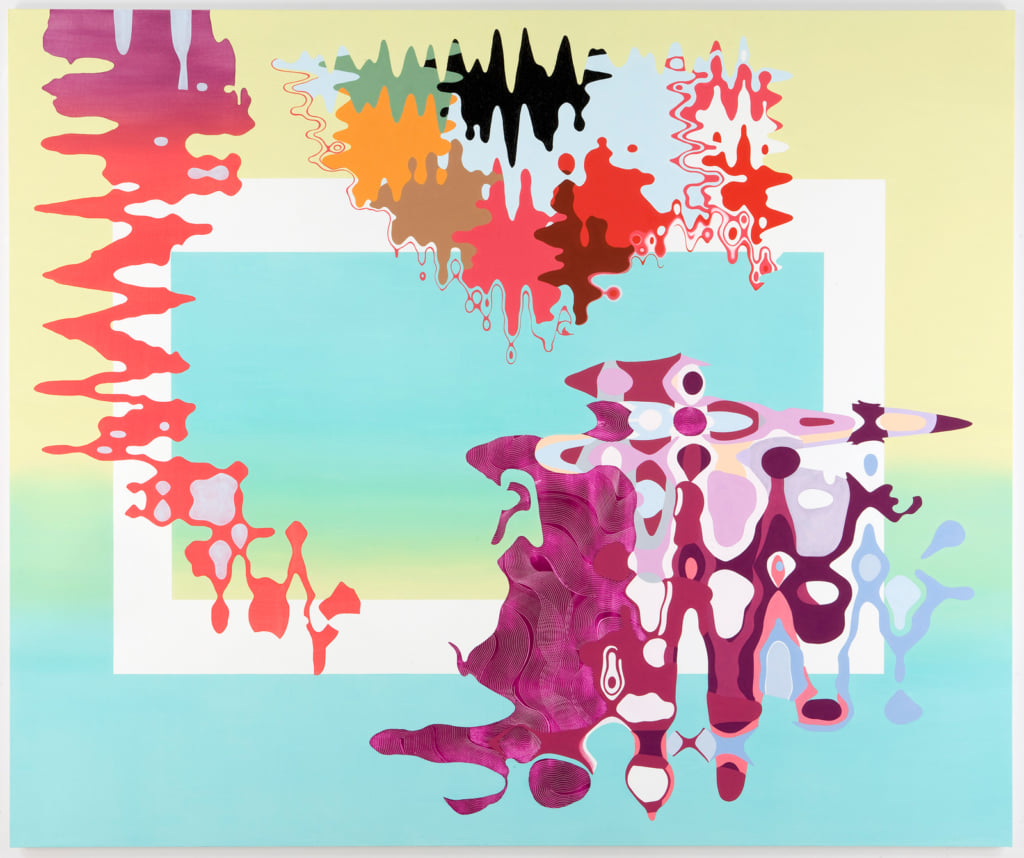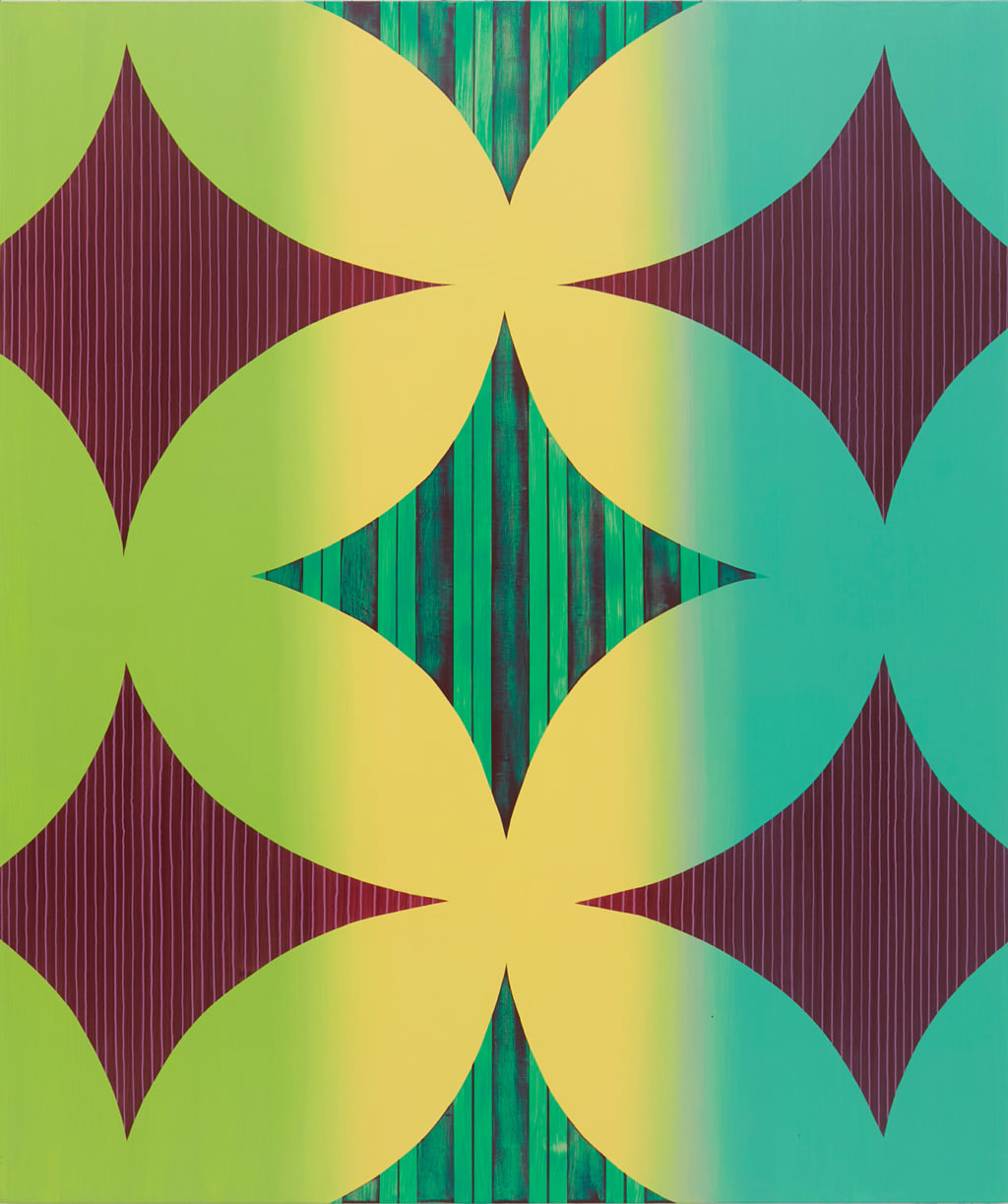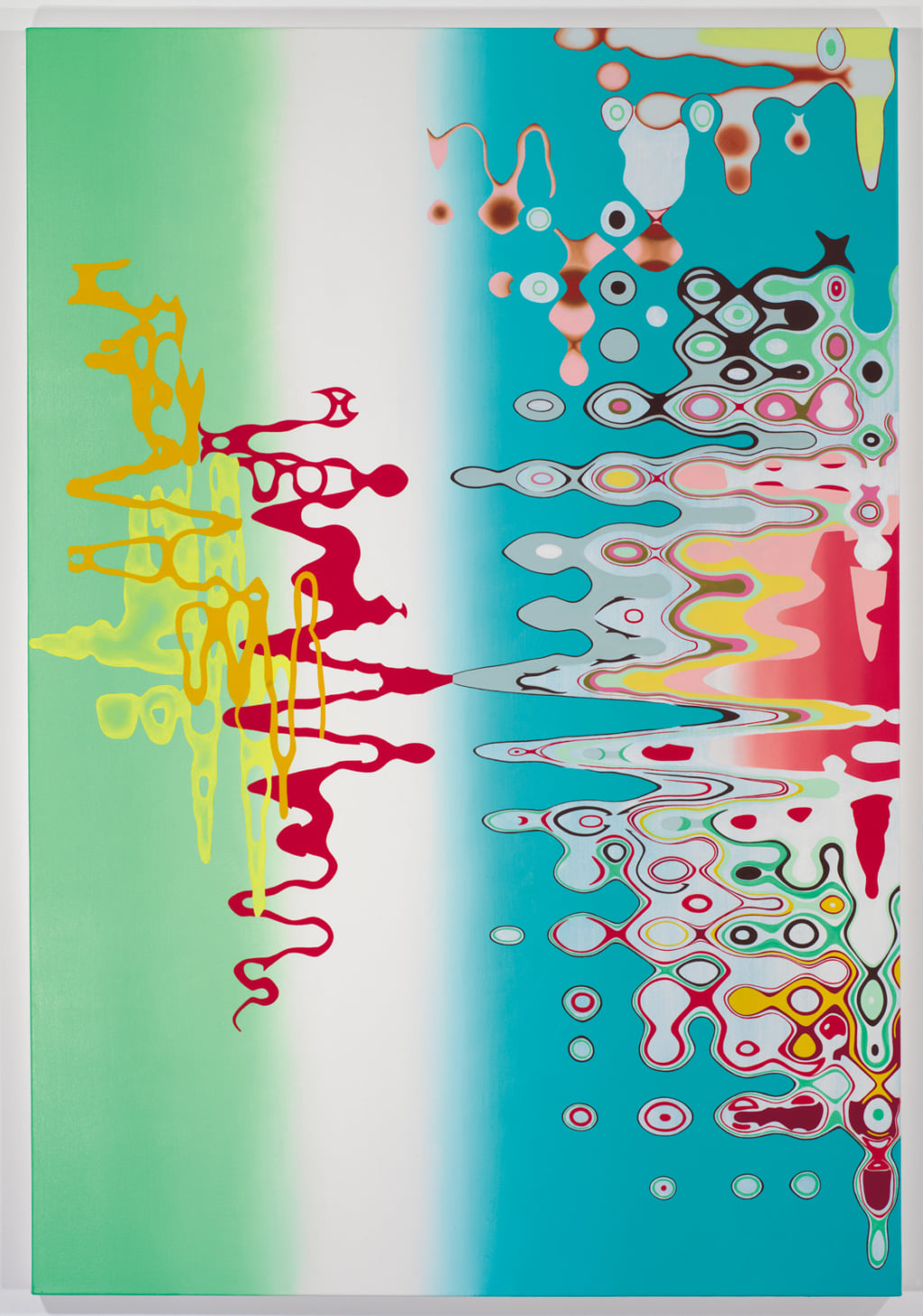Shirley Kaneda and the Multiple Functions of Colour
The painter, born to Korean parents, is inspired by Japanese decorative objects and American abstract expressionism in her engaged art.

© Shirley Kaneda
‘Diversity is at the heart of my work. I’ve always questioned my artistic approach in order to create something fresh, new. For me, abstract art is constantly evolving, and mustn’t always look the same’, declares Shirley Kaneda. Inspired by the abstract expressionism practised by Barnett Newman, Clyfford Still, and Mark Rothko, the artist creates geometric, colourful pieces, in the centre of which shapes confront each other.
Born in Tokyo to Korean parents who later became Japanese citizens, the painter moved to New York in 1970 to study art and never left the United States after that. Her education and her ‘hybrid identity’ developed her creative eye, enabling her to produce pieces that are rich in varied influences. ‘Having grown up in a multicultural family, I never see anything in just one way. That’s probably why my approach is non-linear, irregular’, she explains.
Going beyond expectations
Both on canvas and digitally, Shirley Kaneda creates conceptual and graphic frescoes. At the core of her work lies the choice of colours. ‘Matisse used colour in a sensual, almost provocative way. I always let my intuition speak when I choose the tones to be used in my creations. I’m naturally drawn to certain combinations. I think this taste comes from the years I spent in Japan. The Japanese have a particularly developed visual memory; it’s impossible not to be influenced by their beautiful kimono‘, she declares.
Conscious of the fact that art can be a tool through which to make a statement, Shirley Kaneda seeks to disconcert her audience and invite them to go beyond their expectations. Her decorative works deconstruct the notions of ‘feminine’ and ‘masculine.’ Beauty, fluidity, and grace are seen as being in opposition to heroism, aggression, and rationality. By playing with sharp shapes and more delicate curves and warm hues, she provides an unexpected reflection on contemporary social issues. ‘It’s a way of working with subjects, like gender and difference, that cannot necessarily be explained through narrative’, she concludes. The painter developed these modern reflections with the aid of digital tools before returning to her first love: paintbrushes.
Shirley Kaneda’s work can be viewed on her website.

© Shirley Kaneda

© Shirley Kaneda

© Shirley Kaneda

© Shirley Kaneda
TRENDING
-
Gashadokuro, the Legend of the Starving Skeleton
This mythical creature, with a thirst for blood and revenge, has been a fearsome presence in Japanese popular culture for centuries.

-
The Tattoos that Marked the Criminals of the Edo Period
Traditional tattoos were strong signifiers; murderers had head tattoos, while theft might result in an arm tattoo.

-
The Tradition of the Black Eggs of Mount Hakone
In the volcanic valley of Owakudani, curious looking black eggs with beneficial properties are cooked in the sulphurous waters.

-
Colour Photos of Yakuza Tattoos from the Meiji Period
19th-century photographs have captured the usually hidden tattoos that covered the bodies of the members of Japanese organised crime gangs.

-
Recipe for Ichiraku Ramen from ‘Naruto’ by Danielle Baghernejad
Taken from the popular manga with the character of the same name who loves ramen, this dish is named after the hero's favourite restaurant.





